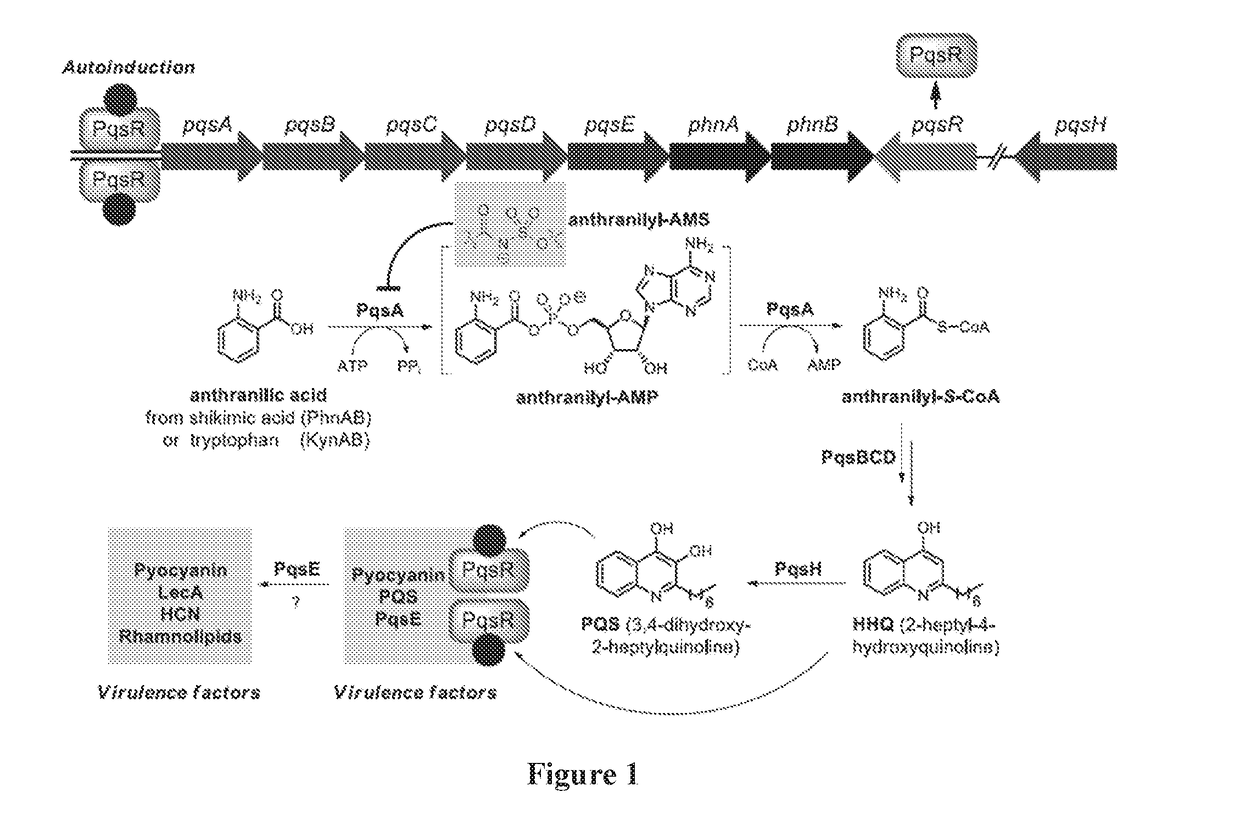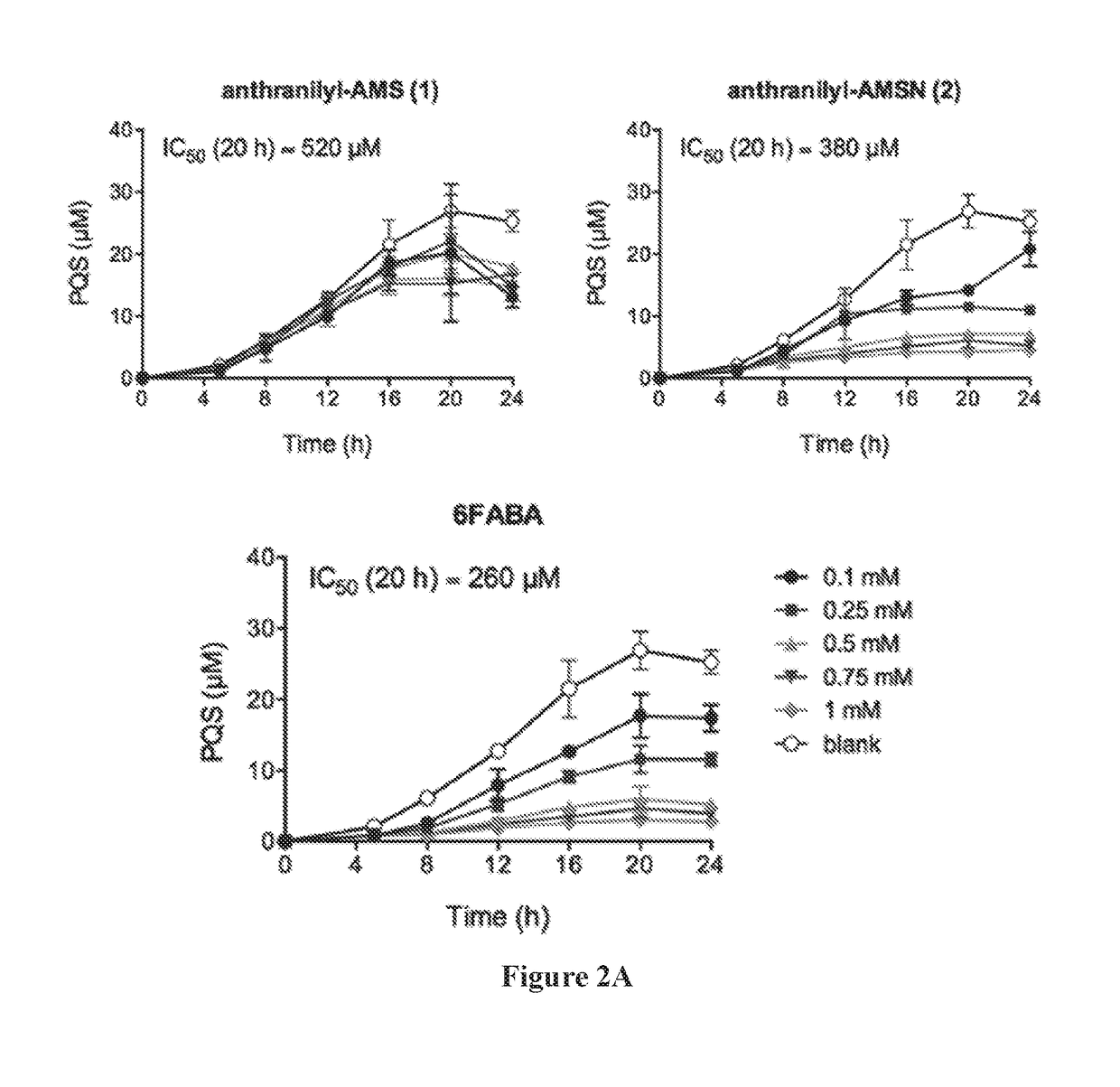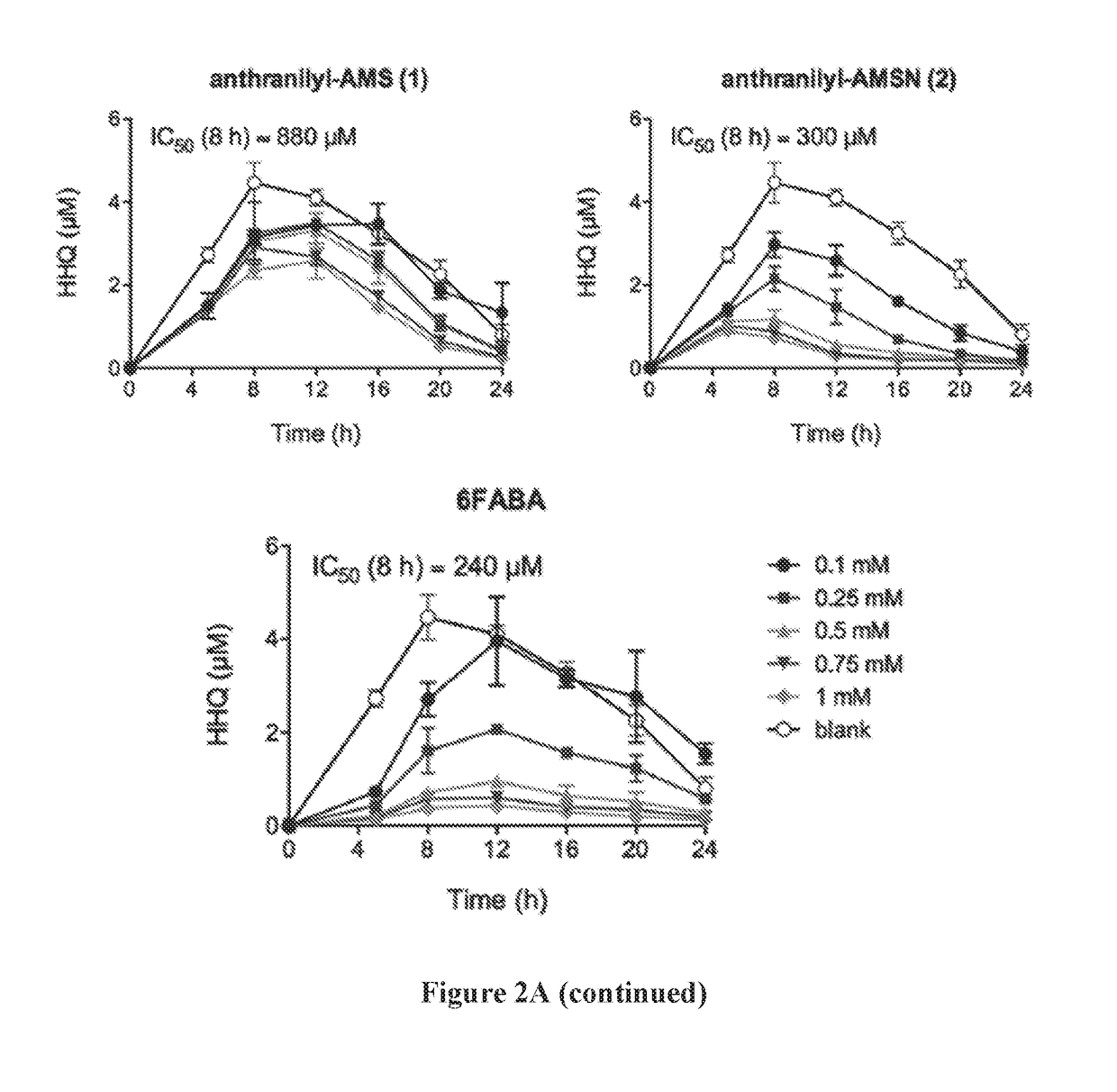Anthranilyl-adenosinemonosulfamate analogs and uses thereof
an anthranilyl-adenosinemonosulfamate and analog technology, applied in the field of anthranilyl-adenosinemonosulfamate analogs, to achieve the effect of limiting the virulence of p and suppressing lymphocyte proliferation
- Summary
- Abstract
- Description
- Claims
- Application Information
AI Technical Summary
Benefits of technology
Problems solved by technology
Method used
Image
Examples
example 1
of the Compounds
General Synthetic Procedures
[0462]Reagents were obtained from Aldrich Chemical or Acros Organics and used without further purification. Optima or HPLC grade solvents were obtained from Fisher Scientific, degassed with Ar, and purified on a solvent drying system. Reactions were performed in flame-dried glassware under positive Ar pressure with magnetic stirring.
[0463]TLC was performed on 0.25 mm E. Merck silica gel 60 F254 plates and visualized under UV light (254 nm) or by staining with potassium permanganate (KMnO4), cerium ammonium molybdenate (CAM), or iodine (I2). Silica flash chromatography was performed on E. Merck 230-400 mesh silica gel 60. Samples were lyophilized using a Labconco Freezone 2.5 instrument.
[0464]NMR spectra were recorded on a Bruker Avance III 500 instrument or Bruker Avance III 600 instrument at 24° C. in CDCl3 unless otherwise indicated. Spectra were processed using Bruker TopSpin or nucleomatica iNMR software, and chemical shifts are expres...
example 2
l Assays
Microorganisms
[0487]Pseudomonas aeruginosa strains PA14 (from Laurence G. Rahme, Department of Microbiology and Molecular Genetics, Harvard Medical School, Boston, Mass., United States of America) was employed.
Cultivation and Samples Preparation
[0488]The production of PQS and HHQ by strain PA14 was performed in triplicate in 14-mL round bottom falcon tubes containing 3-mL cultures in LB medium. Tubes were incubated at 37° C. in an orbital shaker at 225 rpm. Cultures were inoculated with 15-hour culture in LB in order to obtain a starting OD600=0.05, with or without inhibitors added. For PQS and HHQ analysis, a 20 μl aliquot was taken at time points as indicated. Each sample was diluted with 180 μL of methanol containing the internal standard (100 μM of d4-PQS or d4-HHQ) and 2% acetic acid. The solution was then vertexed and centrifuged at 13,000 g for 5 minutes, and the supernatant was transferred to a 96-well plates for LC-MS / MS analysis. Bacterial growth was measured by re...
PUM
 Login to View More
Login to View More Abstract
Description
Claims
Application Information
 Login to View More
Login to View More - R&D
- Intellectual Property
- Life Sciences
- Materials
- Tech Scout
- Unparalleled Data Quality
- Higher Quality Content
- 60% Fewer Hallucinations
Browse by: Latest US Patents, China's latest patents, Technical Efficacy Thesaurus, Application Domain, Technology Topic, Popular Technical Reports.
© 2025 PatSnap. All rights reserved.Legal|Privacy policy|Modern Slavery Act Transparency Statement|Sitemap|About US| Contact US: help@patsnap.com



